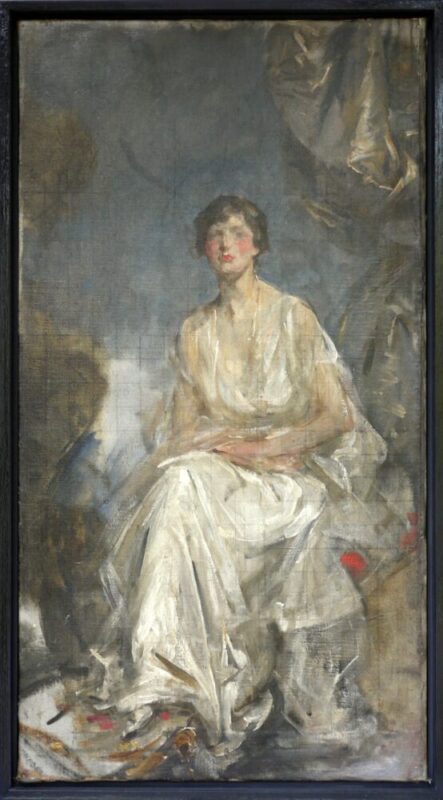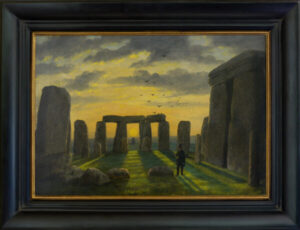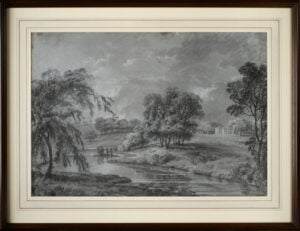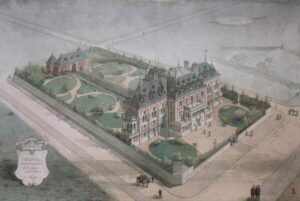Description
Although the identity of this unfinished portrait remains anonymous it is safe to assume the sitter is of high society.
Not until 1888 did Shannon “arrive” as an artist to be taken seriously, this was mainly as a result of two paintings shown at the Grosvenor Gallery, a venue that showed works by invitation only. The first was Henry Vigne, Master of the Epping Forest Harriers (1887, unlocated), a full- length portrait of the distinguished ninety-year-old in hunting attire, riding crop in hand. As one critic proclaimed, the picture “confirms the report that a fresh candidate is about to dispute the profits of realistic portrait painting with Mr. Sargent, Mr. Herkomer [Hubert von Herkomer, 1849–1914], and Mr. Holl [Frank Holl, 1845–1888].
The portrait later earned Shannon the status of hors concours when it was shown at the Paris Exposition Universelle in 1889. The second painting, Myrrah (unlocated) is reported to have piqued the attention of Lady Violet Manners (later the Marchioness of Granby and the future Duchess of Rutland), who paid a visit to Shannon’s studio, thus inaugurating three decades of her family’s patronage of the artist. With Violet Manners’ support, Shannon’s reputation as a portraitist was fully launched. The increasing number of commissions he received required more salubrious surroundings for his growing roster of high society clients and to that end, he took a larger space at the Alexandra Studios, Alfred Place, Kensington, located within comfortable walking distance of the Phillimore Gardens home that he shared with his wife, Florence (whom he married in 1886,) and their daughter Kitty (1887–1974). The rapidity with which Shannon’s career progressed is witnessed by his purchase of a highly desirable property in Holland Park Road, the site of the original Holland Park farm house and, what is more important, next door to Frederic, Lord Leighton (1830–1896), the estimable president of the Royal Academy.



